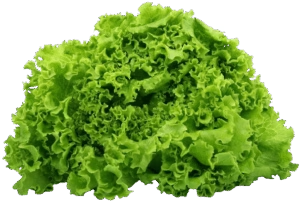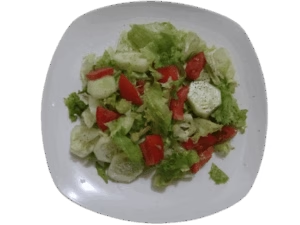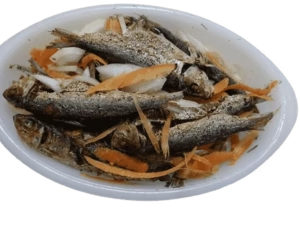TABLE OF CONTENTS
Our mornings can be so busy with life’s obligations becoming centre stage and our health and wellness taking a back seat. Until of course, fatigue, tiredness and low energy hit us like a pebble or the rock of Gibraltar. However, let us not wait for the moment when our body starts to speak to us in languages we often cannot decipher and take the necessary actions to make our morning routines an even more health-filled one by incorporating any or all of these actions as you navigate your wellness journey.
You can add these routines to your busy lifestyle to cleanse, strengthen and rejuvenate the body. The routines include drinking a glass of lemon water in the morning or throughout the day, enjoying a green smoothie or having a nice warm mug of turmeric tea. Let’s discuss!
The Discussion
Our health must be a priority, as, without it, everything else, including the money we have gained, will be futile. Moreover, if you are sick all the time, then that money will be used for one of two things – trying to make yourself well again or staying in the bank and being enjoyed by others as you do not have enough energy or are too sick to really enjoy it.
Further, every little healthy habit you practice will gradually impact your health positively and turn your body into a disease-fighting machine. As such, it doesn’t have to be some gigantic tasks, just these simple routines or others of this nature, which you can practice weekly or on your desired schedule, can make a big difference in your overall health and well-being.
Three (3) Great Morning Routines
- Drinking a nice glass of lemon water.
- Having a green smoothie.
- Enjoying a glass of turmeric tea.
Drinking Lemon Water
Drinking lemon water first thing in the morning has been a ritual of many people over the years. This is due to the many purported health benefits of lemon and water itself. Water flushes the system and lubricates the cells of the body, reducing oxidative stress especially, as denoted, when drunk on an empty stomach first thing in the morning (Patel et. al 2015).
It is said that humans can survive up to five weeks without macro-nutrients (carbohydrates, fats and protein), but only a few days without water (Popkin, et al, 2010). However, adding lemons to the water can boost these and other health benefits. These benefits include balancing the PH levels, as such, you are not too acidic or alkaline, but just right.
Lemon water has also been purported to aid in good gut health (Krasinski, et al. 1986). Some of the other benefits of drinking lemon water include detoxifying the body, skin health, better hydration and strengthening the immune system due to the rich source of vitamin C that the lemon provides (Patel et. al 2015).
Lemons can also help promote weight loss as they can suppress appetite while increasing one’s metabolic rate, especially as one ages (Krasinski et al, 1986). A study by Yoshiko et al (2008) reported that the polyphenols in lemons can suppress body weight gain and the accumulation of body fat through the regulation of one’s messenger RNA (mRNA) levels that are associated with a particular set of genes that are involved in lipid metabolism.
Messenger RNA (mRNA) is a type of nucleic acid. It is formed by the transcription of genes which are used for the encoding of a particular protein. As such, it plays a part in the synthesis of protein in the body (Encyclopædia Britannica).
A Green Smoothie
Having a green smoothie daily or regularly has become an infamous practice and a mainstay of society and for good reasons. It is a healthy treat, so, who wouldn’t want to add it to their health repertoire? I sure would! Green smoothies’ constituents vary from day to day and from person to person. However, the consensus holds true as to what can be considered a green smoothie – a blend of a variety of vegetables and fruits.
Some of the most popular additions include kale, spinach, collard greens, celery, apples and watercress. While some of us would find it difficult to eat our greens as a salad daily, churning them to a liquid format makes good sense to aid in better digestion.
One of the main reasons to include a green smoothie as part of your daily routine is to help your body to thrive by consuming more fruits and vegetables, which are chock full of vitamins and minerals. However, be careful as to some of the fruits and vegetables added as research indicates that certain fruits when pureed in a blender become harder to digest which can result in a dip in one’s blood sugar, for example, apples (Sarni, 2006). A dip in blood sugar can cause headaches, hunger, nervousness, as well as irritability. So, mix it up!
Research also suggests that having a green smoothie regularly can help to boost the immune system due to the micronutrients of vitamin K, and C, as well as some B-vitamins. Green smoothies can also help to increase one’s energy, provide a feeling of satiety as well as improve digestion due to the fiber content and digestive enzymes that most of these vegetables contain.
They can also help to improve bone and heart health as well as aid in better absorption of the nutrients in our food, especially the powerhouse greens such as kale, spinach and lettuce (Slavin & Lloyd 2012).
According to a study by (Emiko Maeda), 80% of deaths from chronic diseases (which are among the leading causes of death on a global scale) could have been prevented with a proper diet and lifestyle. As such, the study found that the daily consumption of green smoothies can improve the waist-to-hip ratio, which is a useful health marker of one’s health risk.
The research also shows that regular consumption of a green smoothie can help to reduce or even reverse the effects of some chronic conditions such as high blood pressure and diabetes. However, while the result on blood pressure was not conclusive, it was a significant factor in the four (4) week trial of the research.
Turmeric Tea
Turmeric or Curcuma longa as it is known scientifically is a root plant of the ginger family and is mainly used as a colouring or a flavouring agent in Asian cuisines (Merriam-Webster.com). In fact, it is the substance that gives the famous ‘curry’ its golden yellow colour.
The use of turmeric in the diet dates back over 3,000 years. Back then, turmeric was used mainly as part of religious ceremonies as well as a culinary spice and was a prominent fixture in India’s holistic medicine or ‘Ayurveda’ practices.
This popular spice has since made its strides across Asia and North American countries and is said to have reached China by 700 AD, West and East Africa by 800 and 1200 AD and Jamaica in the 18th Century (Prasad & Aggarwal, 2011).
There are many purported benefits of turmeric which include wound healing, the prevention and treatment of urinary tract infections, and liver ailments and a treatment for rheumatoid arthritis (Dixit, et al, 1988). It is also said to have both anti-inflammatory and antimicrobial properties due to its active ingredient – curcumin (Mills & Bone, 2000). Turmeric also has a well-documented history of being used to treat some respiratory conditions such as asthma, allergies, colds and even sore throat (Araujo & Leon, 2001).
Caution must be taken though if you are on medications to reduce stomach acid or blood circulation as turmeric can interfere with their effectiveness. As such, please consult your health care professional if you are suffering from any illness or on medication before consuming turmeric.
You can also check out these other turmeric recipes. These, you can enjoy all year round.
Illustrative Summary
Here is an illustrative summary of the Three (3) MORNING ROUTINES to Cleanse, Strengthen and Rejuvenate the body.
Let’s Sum Up!
While our mornings can be a chaotic ritual, they should not be one in which our health is neglected. As such, a simple routine, which you can alternate daily, can have a huge impact on your overall health. This includes drinking lemon water, making a green smoothie or drinking a glass of turmeric tea. Research has shown that lemon water can help to strengthen the immune system due to its high levels of vitamin C, as well as aid in weight loss.
On the other hand, a green smoothie can help us to get some of our daily servings of vitamins and minerals. At the same time, turmeric can benefit the urinary tract and digestion while serving as a pain reliever due to its potent anti-inflammatory benefits. So, what will tomorrow morning be like for you? Share it nuh!
You can read more on turmeric in the article below, as well as watch a YouTube video of this Post here:
- Turmeric – An Aged Old Spice – Five (5) Awesome ‘Must-Know’ Health Benefits!
Three (3) Great things to add to your Busy Morning Routine.
Editor’s Note: Article last updated on February 27, 2025.
- Araujo, C.C, Leon, L.L. (2001). Biological activities of curcuma longa. Mem Inst Oswaldo Cruz, 96, 723-8. https://www.ncbi.nlm.nih.gov/pubmed/11500779
- Dixit, V.P, Jain, P, Joshi, S.C. (1988). Hypolipidaemic effect of curcuma longa. Indian J Physiol Pharmacol, 32, pp. 299-301.
- Krasinski, S.D, Russel, R.M, Samloff, I, Jacob, R, Dalla, G.E, McGandy, R, Hartz, S.C. (1986). Fundi atrophic effect on haemoglobin and several serum nutritional indicators. Jam Geriatr Soc, 34(11), 800-6.
- Maeda, E. (2013). The effects of green smoothie consumption on blood pressure and health-related quality of life: A randomized controlled trial. Dissertation and thesis paper 974. https://pdxscholar.library.pdx.edu/open_access_etds/974/
- “Messenger RNA (mRNA).” (n.d) In Encyclopædia Britannica. Encyclopædia Britannica, inc., Retrieved May 20, 2019 from https://www.britannica.com/science/messenger-RNA
- Mills, S, Bone, K. (2000). Principles and practice of phytotherapy. Toronto, ON.
- Patel, S, Patel, J, Patel, M and Jyoti Sen, D. (2015).Say yes to warm to remove harm: Amazing wonders of two stages of water. European Journal of Pharmaceutical and Medical Research, 2(4), pp. 444-460.
- Popkin, B. M., D’Anci, K. E., & Rosenberg, I. H. (2010). Water, hydration, and health. Nutrition reviews, 68(8), 439–458. doi:10.1111/j.1753-4887.2010.00304.x
- Prasad S, Aggarwal BB. Turmeric, the Golden Spice: From Traditional Medicine to Modern Medicine. In: Benzie IFF, Wachtel-Galor S, editors. Herbal Medicine: Biomolecular and Clinical Aspects. 2nd edition. Boca Raton (FL): CRC Press/Taylor & Francis; 2011. https://www.ncbi.nlm.nih.gov/books/NBK92752/
- Sarni, S.J. (2006). The ups and downs of drinking green smoothies. Retrieved May 20, 2019 from https://www.emiia.org/writable/files/the_ups_and_downs_of_drinking_smoothies_2.9.18.pdf
- Slavin, J.L., & Lloyd, B. (2012). Health benefits of fruits and vegetables. Society for Nutrition. Adv. Nutr. 3: 506–516, 2012. https://www.ncbi.nlm.nih.gov/pmc/articles/PMC3649719/pdf/506.pdf
- Turmeric (n.d) In Merriam-Webster Dictionary. Retrieved May 18, 2019 from https://www.merriam-webster.com/dictionary/turmeric
- Yoshiko, F, Masanori, H, Miki, O, Sanae, H, Yuka, N, Toshihiko, O, Michitaka, N. (2008). Lemon polyphenols suppress diet-induced obesity by up-regulation of mRNA levels of the enzymes involved in B-oxidation in mice while adipose tissue, J Clin Biochem Nutr. 43(3), 201-209.





